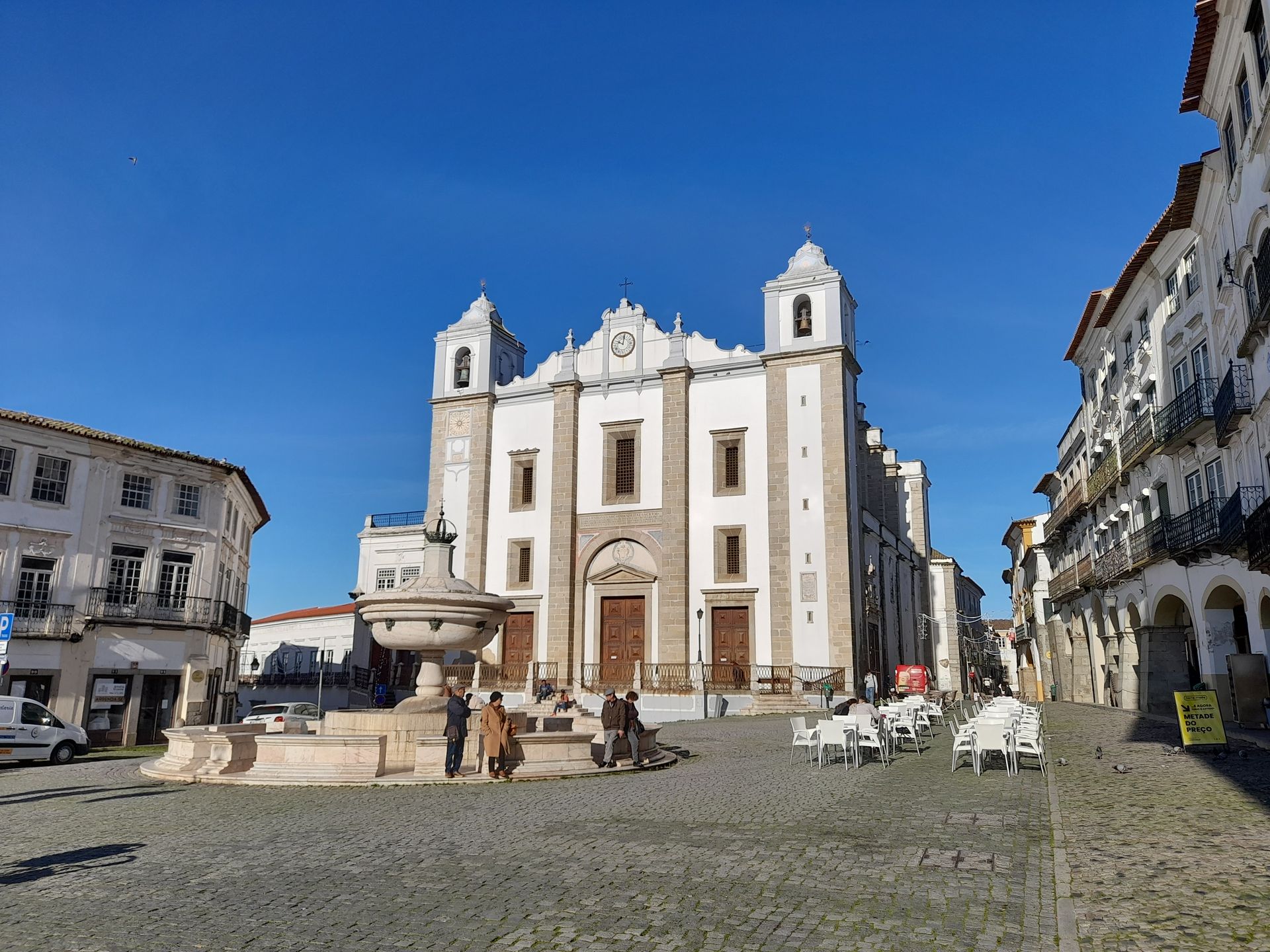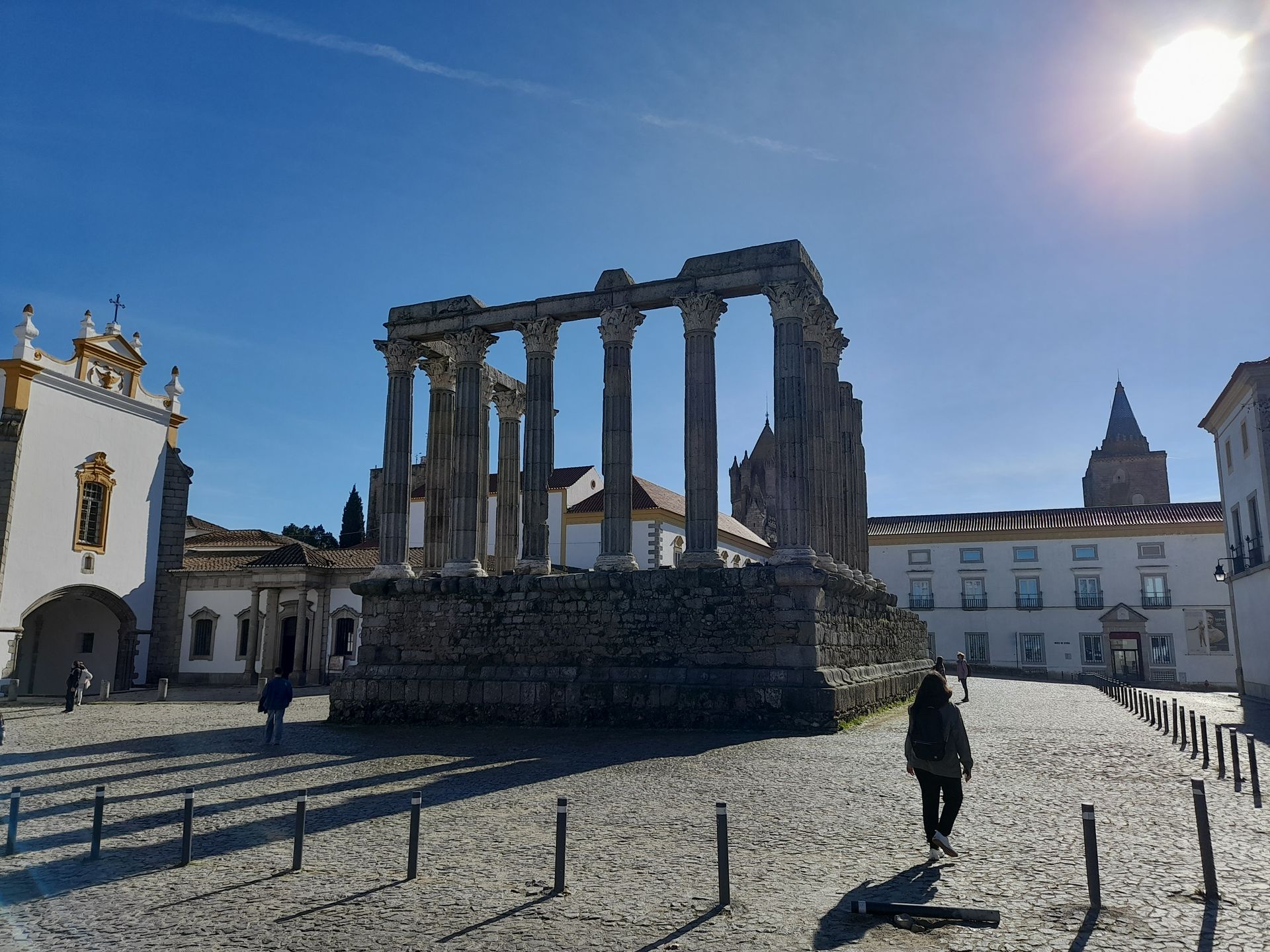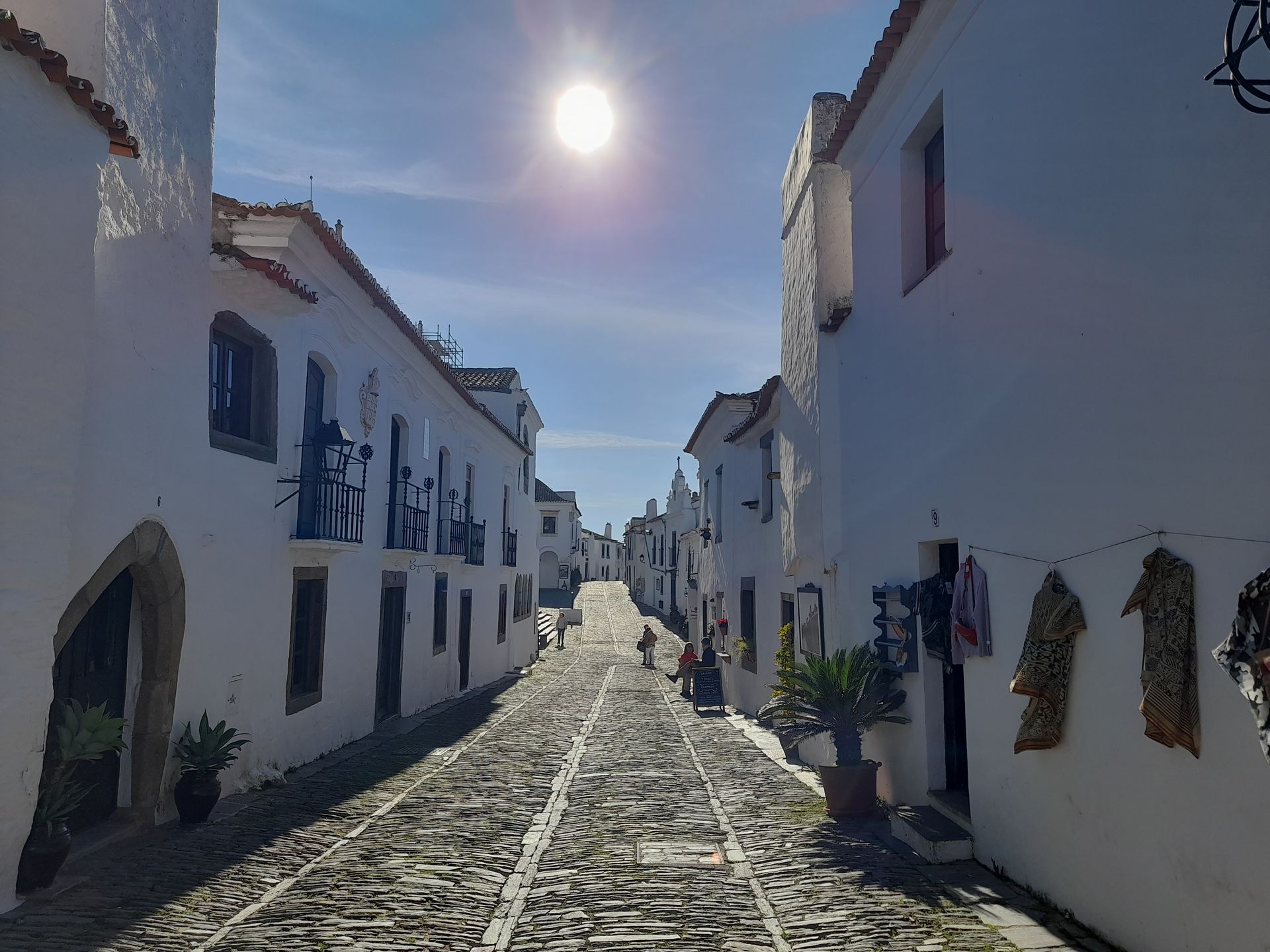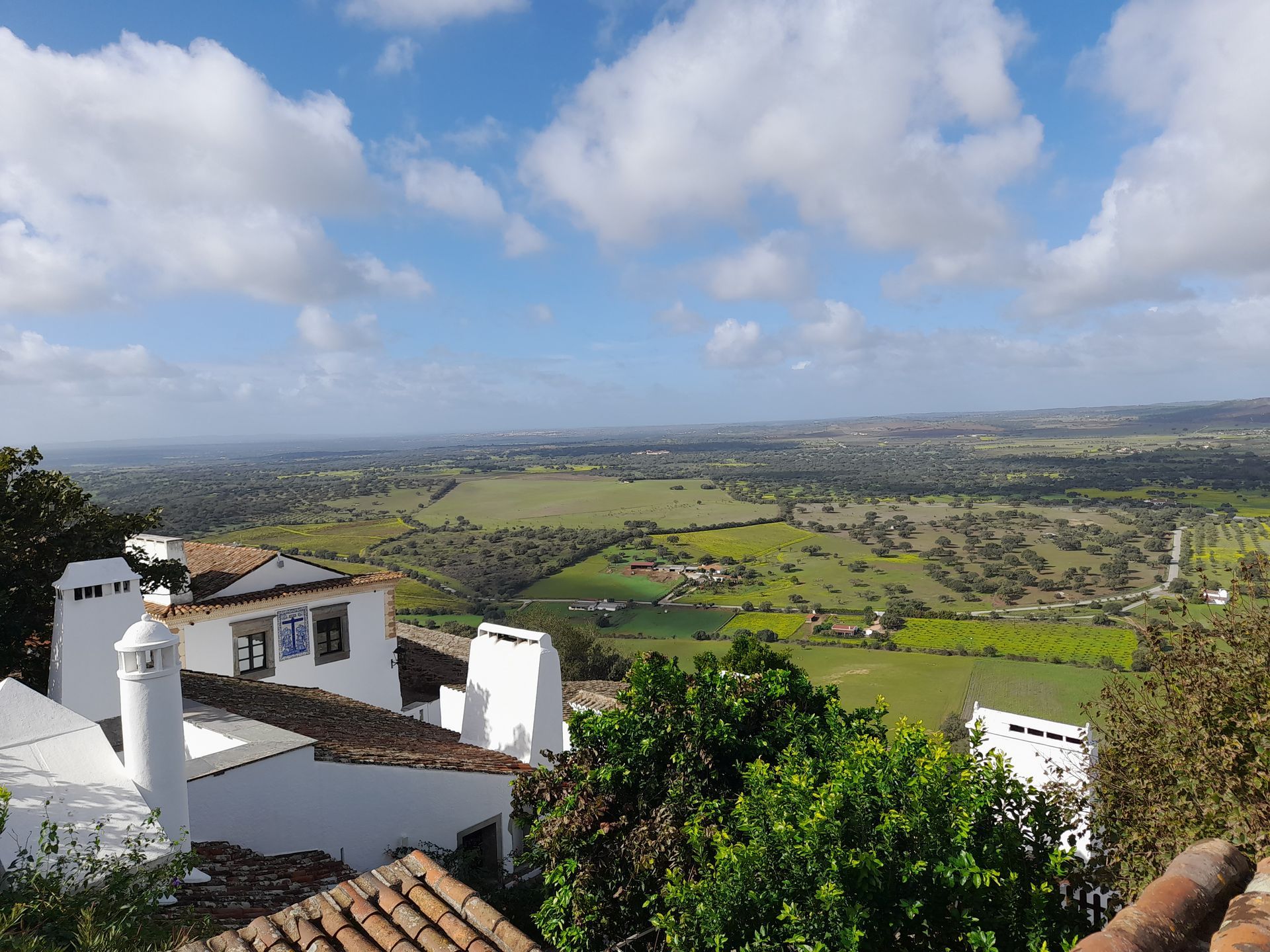FULL DAY TOUR ÉVORA AND MONSARAZ
The city of Évora, Chapel of the bones and Roman Temple.
A winery that produces millenial carved wine. Visit and tasting.
A gin distillary. Visit and tasting.
Pick up and drop off included.
All tickets and lunch included.
We adjust the itinerary to any slight mobility issue.
This Tour starts at Lisbon.
Pickup at Lisbon and drive to Évora.
St. Francis Church and the Chapel of Bones.
Initially a Franciscan convent of the 14th century, the extinction of religious orders in 1834 dictated the rapid decline of the convent building.
The church and the Capela dos Ossos were maintained, due in part to the Order of Terceira, the intense popular devotion to Senhor dos Passos and the transfer of the headquarters of the parish of São Pedro to the church.
In 1892-95, a large part of the ruined convent was sold at public auction to the worthy Eborense Francisco Barahona, who ordered the construction of the houses that still exist today and generously collaborated in the restoration of the church and the Capela dos Ossos.
The extensive rehabilitation works of 2014-2015 returned the church to all its functional and patrimonial dignity.
The Capela dos Ossos was built in the 17th century, following a model in vogue at the time, with the intention of provoking through its image reflection on the transience of human life and the consequent commitment to a permanent Christian experience. Both the walls and the pillars are covered with thousands of bones and skulls, from the burial spaces connected to the convent. The frescoes that decorate the vaulted ceiling, dating from 1810, feature a variety of symbols illustrated by biblical passages and others with instruments from the Passion of Christ. At the exit of the chapel, on the front wall, a tile panel, designed by the architect Siza Vieira, contrasts the allusion of death with the miracle of life.
On the other hand, the construction also had a practical purpose: to provide a destination for the thousands of bones that filled the more than 40 monastic cemeteries that spread across the region in the 17th century, when it was built.
The old cemeteries occupied vast areas where more than five thousand monks were buried and this was a solution to give a decent destination to their remains.
“We, the bones that lie here, are waiting for your own bones”
Walking tour through central Évora towards Praça do Giraldo and Roman Temple.
Giraldo Square, or Praça do Giraldo is the main square in the city of Évora and is located in the historic center in the parish of Santo Antão.
Formed as a square in the 14th century, the old Town Hall and a Roman arch were located here, later demolished during the construction of the Church of Santo Antão and the Fountain of Praça do Giraldo. The city market was also held here.
Currently the square is dominated by the Church of Santo Antão and the headquarters of the Banco de Portugal de Évora at the top of the square. Around there are banks, shops, restaurants and terraces.
Roman Temple
The name Temple of Diana remained until the 1980s and 1990s, when it was discovered that the temple had been dedicated to Emperor Augustus.
The building was partially destroyed in the 5th century, during the invasions of barbarians. In 716 the Muslims took over the city, and the Roman temple was probably transformed into a fortified mosque, with crenellated walls. However, it is possible that the building's conversion into a military structure had already occurred previously, during the Visigothic era. The Islamic rule of Évora lasted until 1165, the year in which it was reconquered by Geraldo Geraldes as part of a military campaign in Alentejo, and the temple was probably converted into a church. In fact, this was a very common practice in this period, due to the immediate need for a building dedicated to Christian worship, while building a church from scratch would be a very time-consuming process. One of the traces of its adaptation to the church was a bell tower on the upper side of the monument.
Also during the 19th century, the land around the temple was removed, by order of King D. Fernando II of Portugal, when he visited the city of Évora, together with Queen D. Maria II, and noticed that the building was partially buried. The demolition of the slaughterhouse walls in the 19th century made the original structures more vulnerable to the effects of earthquakes and climate, although these risks were mitigated by the natural resistance of these materials.
The building was initially classified by a decree of June 10, 1907 as Ruins of the Roman Temple, and was later elevated to National Monument by a decree of June 16, 1910.
Typical Restaurant for Lunch
Drive to Reguengos de Monsaraz
Visit to wine cellars with tasting of carved wine
Visit to Gin distillery with tasting
Return to Lisboa







